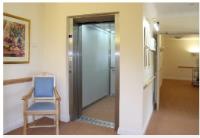 Add My Company
Add My Company
Sign In
Specifying Lifts for Care Homes
26-10-2018

A helpful guide on the process of specifying lifts for nursing homes and all the considerations that need to be taken into account when carrying out this process…
Care homes - a growing industry
With the growing ageing population an increasing concern, at around 11.8 million aged 65 and over in the UK (Mid-2016 Population Estimates UK Office for National Statistics, 2017); it’s hardly surprising that there are now an estimated 4,699 Nursing homes and 6,023 Residential Care homes in the UK. (Age UK estimate calculated from Care of Older People UK Market Report, Laing and Buisson, 2017).
The fundamental standards of care as set out by the Care Quality Commission (CQC, 29 May, 2017), the independent regulator of health and social care in England state that care must be person-centred (tailored to the individual service user), service users (residents in care homes) must be treated with dignity and respect and safety is paramount at all times (risks must be evaluated during any care or treatment pathway).
When it comes to the premises and equipment within care homes the guidelines state that ‘The places where you receive care and treatment and the equipment used in it must be clean, suitable and looked after properly.’
With so many people now in residential and nursing care across the UK, it’s hardly surprising that there has been increase in the requirement of lifts for the care sector.
The purpose of lifts in residential homes
If your building is more than one storey/level and the people within your building have, or may have in the future, mobility issues you must supply a vertical lift.
Lifts play an integral role in helping to maintain the safety of residents at all times. For those who require a lower threshold of care (within residential care homes for example), user-friendly and accessible lifts can help to increase their level of mobility and therefore allow them to maintain their independence for longer.
For those who require a higher level of care and handling such as 1:1 or in some cases 2:1 assistance from carers, the use of a care home lift enables carers to safely move residents between floors and around all areas of the care home, ensuring person-centred care can be delivered at all times.
Lifts also help to ensure the safety of carers and limit the risk of accidents or injury for both residents and carers when it comes to manual handling. Getting this requirement right can help to ensure the well-being of employees/carers within your facility as it will help to ensure the safe movement of everyone, around the building.
What types of lifts may be suitable for a care home?
For guidance on lifts we look to Part M of the building regulations, Volume 2 (Buildings other than dwelllings) that deals with the accessibility and use of buildings. Part M, states that the preferred solution to enable disabled access is a passenger lift. But it also recognises that due to site constraints it is sometimes the case that a passenger lift cannot be accomodated, so platform lifts can be specified in existing care homes; largely due to the building constraints and layout of existing facilities.
For more information on Specifying Lifts for Care Homes talk to Stannah Lifts
Enquire Now
More Blogs
List your company on FindTheNeedle.

